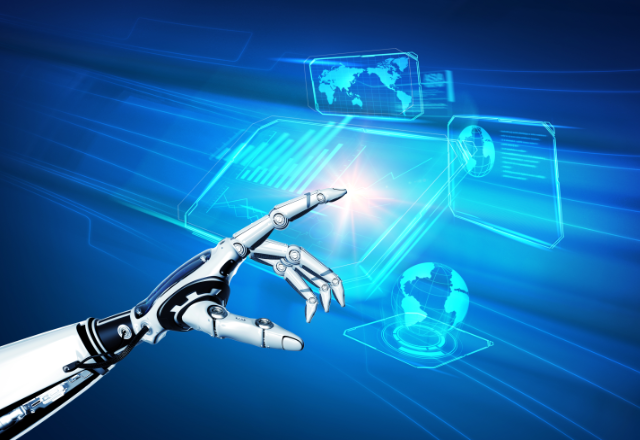

Nowadays, artificial intelligence is everywhere. Its powerful functions are fascinating, but sometimes it also causes people's worries. For teams that do not adopt artificial intelligence technology, they may fall behind.
As a CTO (or head of engineering), part of your job is to guide adoption of safe and impactful AI tools.
This article will select the “best of breed” tools for each area of software delivery, or at least those AI tools currently being built for them that can make an impact.
Here’s a look at the artificial intelligence chosen for software development.
It is not an exaggeration to say that artificial intelligence will bring revolution to various industries. Artificial intelligence is revolutionizing software engineering, and various machine learning algorithms and AI-based tools and techniques are emerging to help developers improve their workflow and increase efficiency.
Artificial intelligence has practical applications in a variety of tasks, such as generating more accurate test cases and creating more efficient code. Developers can use AI-enabled tools to automate many of the tasks involved in software engineering, freeing up more time to focus on core development tasks. Artificial intelligence-based software testing is another exciting area of development. Neural networks help developers test code more thoroughly and identify potential vulnerabilities and errors before major problems arise.
This is also a shortcut to improve developer experience. Artificial Intelligence Engineering empowers enterprise teams to do more of the things they truly enjoy during development.
The future of software development is brighter, thanks to the powerful driving force of artificial intelligence and deep learning. With the help of these technologies, developers can streamline their workflow, improve the quality of their code, and stay ahead of the curve with less human intervention.
This is undoubtedly the most famous and most hyped artificial intelligence tool on this list.
GitHub Copilot X is not yet available. When it launches, it will likely become the most popular AI tool in software engineering.
People may be familiar with GitHub Copilot and its features such as Copilot chat, and X is a smarter successor based on GPT-4. This program is designed to be the user's AI matching programmer and has been integrated into most engineers' workflows.
Here are some of the things it should be able to do:
When it launches, it will simplify most aspects of software delivery - directly handling any part of the code's lifecycle.
If you can’t wait to try Copilot X, you might as well consider Sourcegraph Cody. It is said to be up to 10 times faster than normal methods, helping users read, write and understand code faster.
Sourcegraph Cody can read and understand a user's entire code base, including code diagrams and enterprise documentation, and can answer questions about it.
It's still in beta (like many AI tools these days) and doesn't always get things right, but it's clearly the product of choice for the Sourcegraph team, which says its results It's getting better every day.
Or try adopting:
People need clear and consistent documentation. Readable AI can automatically generate source code comments.
Poor (or missing) documentation can be a pain point for software engineers. For engineers new to a codebase or team, it can be especially difficult and waste a lot of time.
Readable AI can significantly reduce the time developers spend writing comments, allowing them to focus on more complex tasks and increasing overall productivity.
Readable AI and the development team are already compatible with IDEs such as VSCode, Visual Studio, IntelliJ and PyCharm, and can read most languages.
For most engineering teams, spending a lot of time studying Stack Overflow is a daily reality.
What if software engineers could ask an expert who fully understands the code base and get an answer instantly?
That’s what Adrenaline AI does. It can explain how a feature works, identify where it should be implemented, or provide guidance through debugging.
It is built using static analysis, vector search and high-level language models.
What if code migration could be automated? What if artificial intelligence could be used to handle dependency upgrades?
Grit.io is an automated technical debt management tool designed to simplify this task. It automatically generates pull requests that follow best practices for handling details and uses continuous radar to detect regressions.
Developers claim that migrations can be completed 10x faster, and if only half of this is true (there is no confirmation of this), then dealing with this technical debt will not consume a lot of time and resources.
Tired of spending a lot of time reviewing pull requests? Codeball AI can solve this problem.
This AI-powered code review tool can evaluate pull requests, highlight risks, and even approve low-risk pull requests based on your enterprise's configuration. Ultimately, it should mean businesses can launch products faster and with more confidence.
It's great for spotting risky code changes and has been trained on millions of code contributions.
Trained on millions of code contributions, Codeball AI identifies risky code changes and provides actionable, team-specific insights.
It works with GitHub Actions and supports more than 20 programming languages. Artificial intelligence is changing the rules of the game, and this is just a taste of the future.
Artificial intelligence in software engineering will play an important role, and keeping up with this change will be a make-or-break matter for many technology teams and even the businesses they are part of. If successful, many practical potential uses of artificial intelligence may be discovered, thereby truly realizing the vision of "10 times faster improvement" into reality.
So businesses shouldn’t miss out on the latest AI advances that are transforming software engineering.
The above is the detailed content of Six great AI tools every CTO needs to know. For more information, please follow other related articles on the PHP Chinese website!




